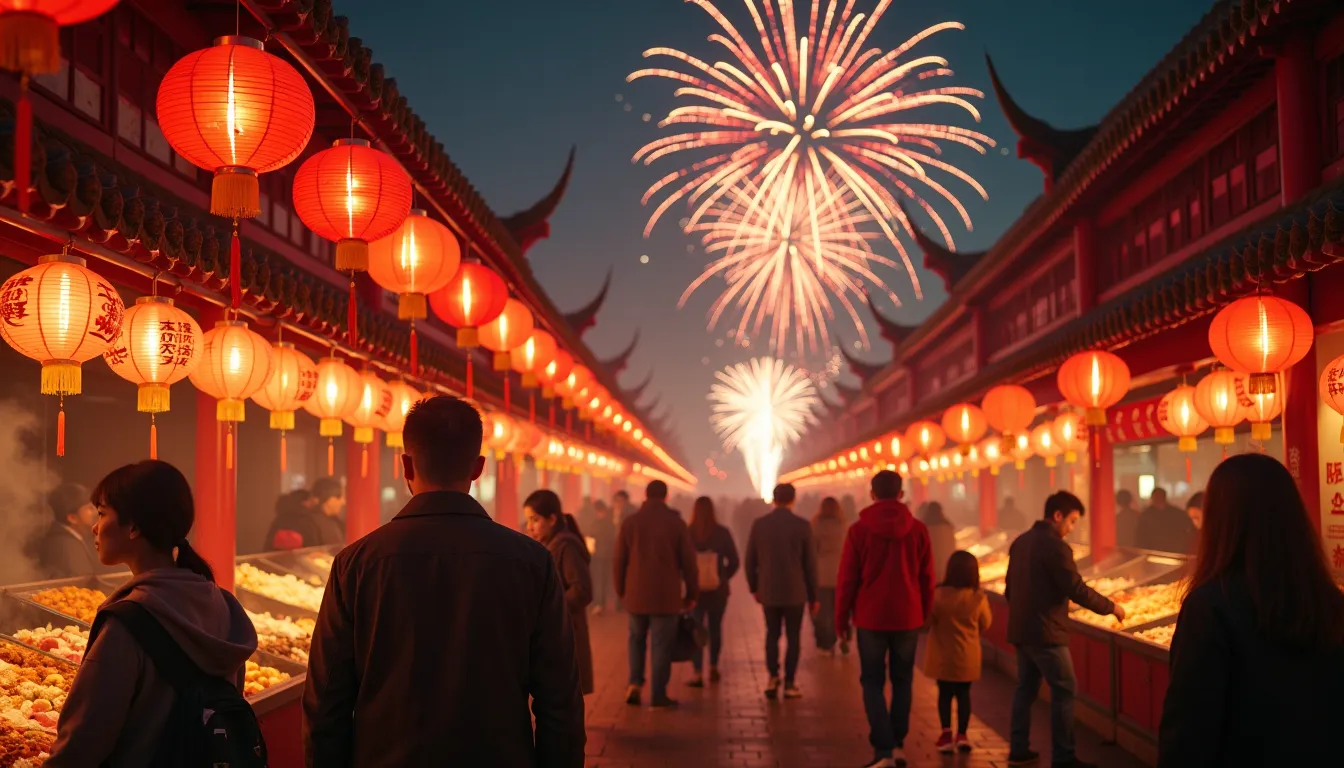As the golden glow of firecrackers illuminates the night sky and the rhythmic beating of drums echoes through ancient streets, a tale as old as time unfolds. Chinese New Year, a celebration steeped in legend and myth, captivates millions worldwide with its vibrant traditions and tantalizing mysteries. But what secrets lie behind this grand festival that has endured for millennia?
The Ferocious Beast That Sparked a Tradition
At the heart of Chinese New Year lies the legend of Nian, a terrifying monster with the head of a lion and the body of a bull. As the story goes, Nian would emerge from the depths of the sea each year to wreak havoc on villages, devouring crops, livestock, and even children. This annual terror gripped communities until one fateful year when an old man appeared with a solution.
“The old man taught villagers to use the color red, loud noises, and fire to scare away the beast,” explains Professor Li Wei, a folklore expert at Beijing University. “These elements became the foundation of Chinese New Year celebrations we see today.”
Red Envelopes: More Than Just Lucky Money
The tradition of giving red envelopes filled with money, known as “hong bao,” is more than just a generous gesture. These crimson packets are believed to ward off evil spirits and bring good fortune to the recipient. In modern times, this custom has evolved, with some cities in China even offering digital red envelopes through popular apps like WeChat.
Dumplings: A Bite-Sized Symbol of Prosperity
No Chinese New Year feast is complete without dumplings. These savory morsels, shaped like ancient Chinese gold ingots, symbolize wealth and prosperity for the coming year. In northern China, families gather to make dumplings together, a tradition that strengthens bonds and passes down culinary skills through generations.
The Lantern Festival: Illuminating Ancient Wisdom
The culmination of Chinese New Year celebrations, the Lantern Festival, paints cities and villages with a mesmerizing glow. This 2000-year-old tradition is not just about beautiful lights; it’s a time for solving riddles written on lanterns, a practice that harkens back to ancient times when scholars would test each other’s wit and wisdom.
A Feast for the Gods (and Hungry Travelers)
The reunion dinner on New Year’s Eve is the most important meal of the year, with each dish carrying symbolic meaning. Fish, served whole, represents abundance, while long noodles symbolize longevity. For travelers exploring China during this time, participating in a traditional feast offers a unique glimpse into centuries-old customs.
The Dance of the Lions: A Spectacular Show of Strength
Lion dances, with their vibrant costumes and acrobatic performers, are not just entertainment; they’re a ritual to drive away evil spirits and usher in good fortune. In cities like Hong Kong and Singapore, these performances draw massive crowds, turning streets into impromptu stages for this ancient art form.
Firecrackers: The Sound of Prosperity
The deafening crackling of firecrackers is more than just noise pollution; it’s a tradition rooted in driving away Nian and other malevolent spirits. While some cities have banned fireworks due to safety concerns, the tradition lives on in rural areas and through innovative light shows in urban centers.
The Zodiac: Your Celestial Guide to the Year Ahead
The Chinese zodiac, with its 12 animal signs, adds another layer of mystique to the New Year. Each year is associated with an animal, influencing personalities and fortunes. Whether you’re a fierce tiger or a gentle rabbit, your zodiac sign is believed to shape your destiny for the coming year.
Temple Fairs: A Window to the Past
For travelers seeking an authentic experience, temple fairs offer a glimpse into traditional Chinese culture. These lively events, held in cities like Beijing and Xi’an, feature folk performances, handicraft demonstrations, and street food that transports visitors back in time. It’s a chance to discover a real-life fairytale, much like exploring medieval European towns.
The Great Migration: A Modern Epic
Chinese New Year triggers the world’s largest annual human migration, known as “Chunyun.” This massive movement of people, as families reunite across the country, is a testament to the enduring importance of tradition in modern China. For adventurous travelers, it’s an opportunity to witness a contemporary legend in the making.
As the fireworks fade and the last lantern flickers out, the legends and myths of Chinese New Year continue to captivate and inspire. This ancient festival, with its blend of tradition and modernity, offers travelers a unique window into the soul of Chinese culture. Whether you’re savoring dumplings in Beijing or watching lion dances in Singapore, the spirit of Chinese New Year promises an unforgettable journey through time, legend, and celebration.
